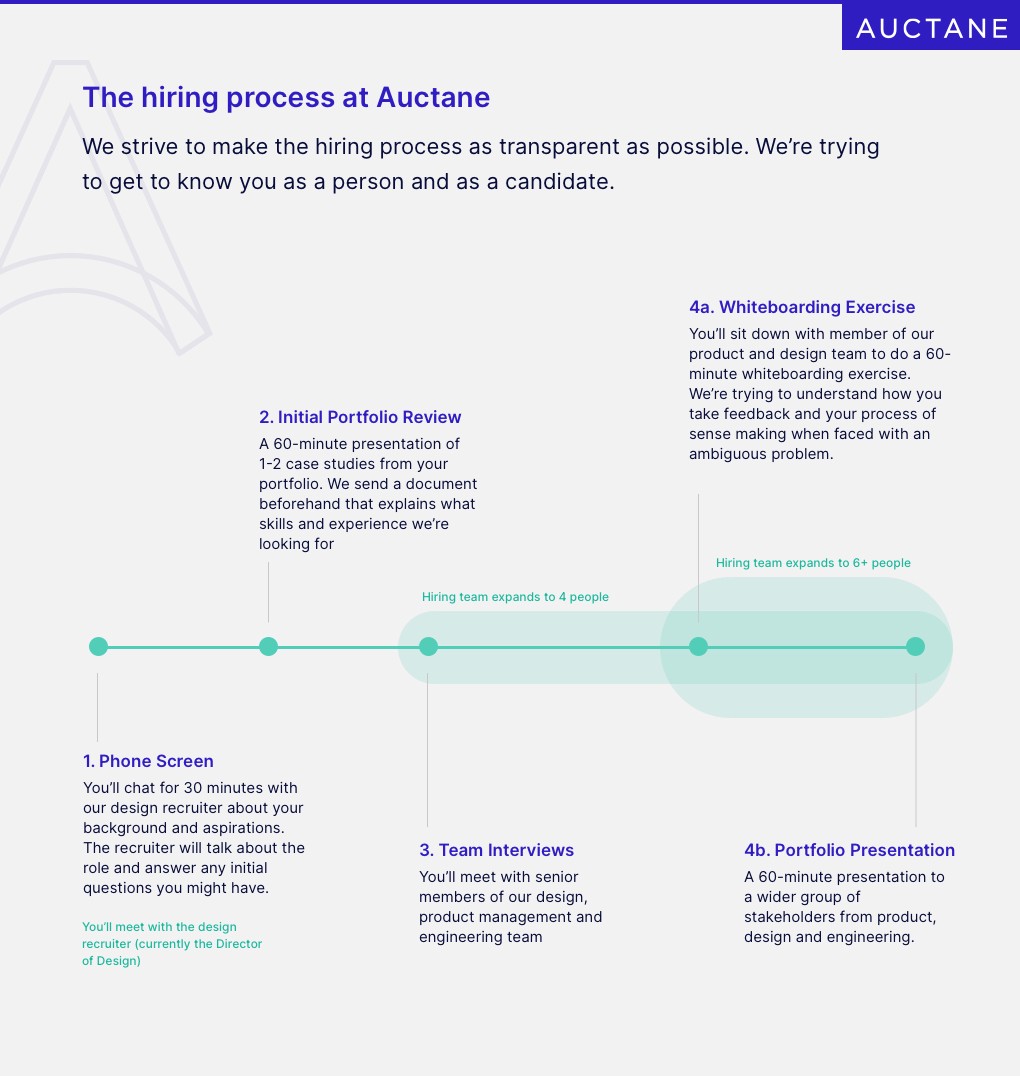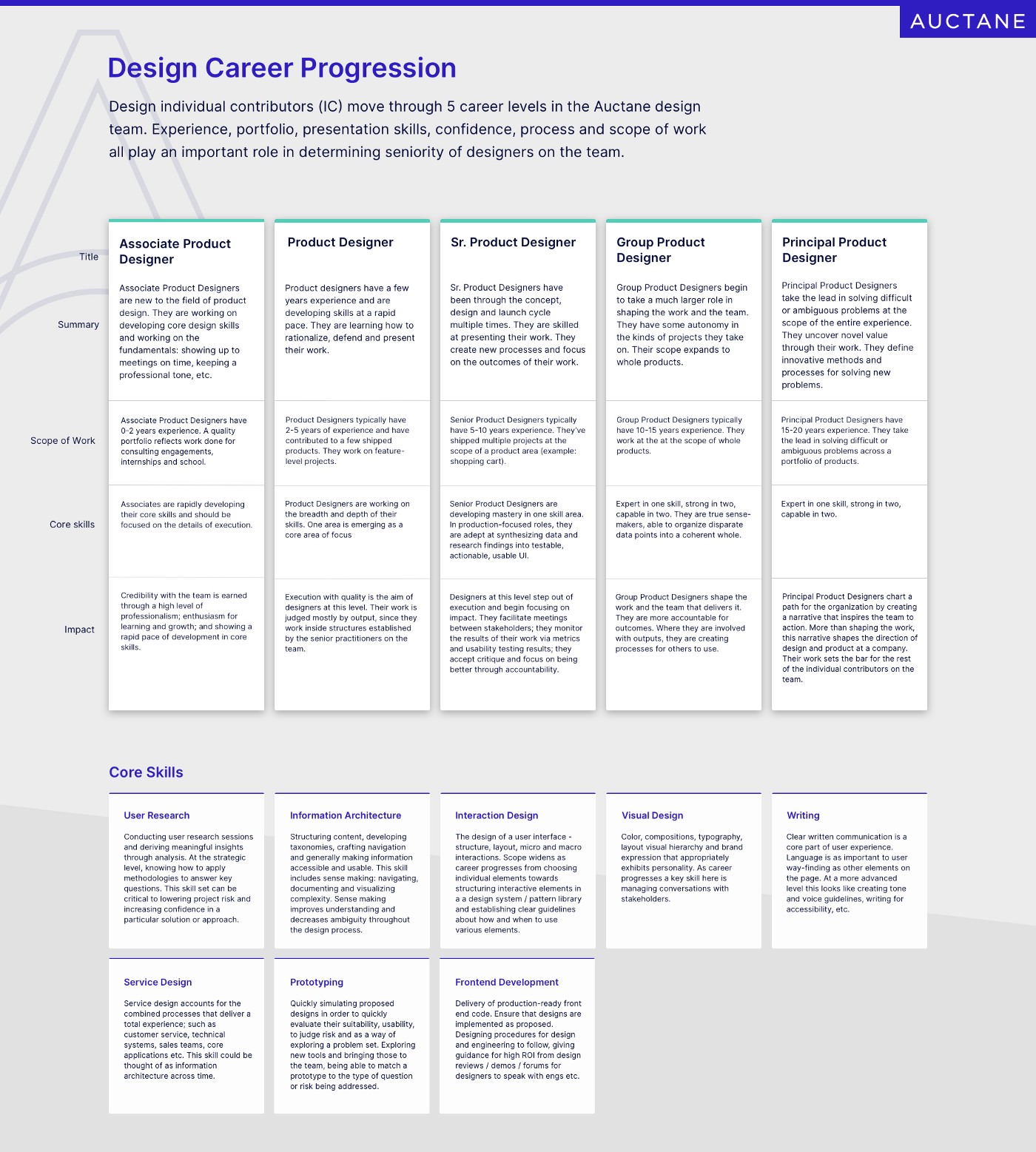What I'm like as a manager
My philosophy, approach and deliverables that help manage teams and develop world-class designers
CompanyHomeAway, Rackspace, TurnKey, Auctane (ShipStation)Year2011-PresentDuration10 yearsRoleRecruiting and hiring designers, onboarding, mentoring, performance reviews, and more
Problem
Very few companies have effective manager training. Poor management can lead to high attrition and low morale. As an emerging manager, I had to figure out effective strategies outside of a structured training program. While I’ve worked under fantastic managers, it’s hard to duplicate.
Brief
Through trial and error, figure out what management techniques are effective for motivating people in organizations that are increasingly flat.
Users
Direct reports – user experience designers, researchers, visual designers and associates=.
Heuristics
- Working manager – Managers must be directly involved with the work of reports – they must be peers in solving big problems
- Direct feedback that’s kind – As a manager, you can’t avoid difficult conversations, but you must always remember there is someone on the other end who relies on you for support, career growth and encouragement. Too harsh or too nice are both perilous.
- Make time – As a manager, you have to make time for people to talk about the bigger issues on an ongoing basis
- Know the people who report to you – You have to get to know people on a personal level, and appreciate that their lives impact their work as much (or more) than anything else
- Create structure – Structures like a career matrix, quarterly reviews etc. creates a more consistent, more fair workplace where people can focus on the merits of the work vs. the politics of a promotion.
- Inclusion – It’s important to create an environment of psychological safety. Safety and inclusiveness creates a place where everyone can thrive. Diversity is synonymous with creativity.
- Create learning opportunities – take chances on people, it’s how they’ll learn to grow
Solution overview
Recruitment and hiring
Creating structure starts at the beginning of a working relationship. Ambiguity can cause all sorts of issues, so especially in high-stakes situations like interviewing.
Giving people a sense of what to expect can help set expectations, and it shows that you’ve thought about the candidate experience – something that often gets neglected.
Setting expectations for career growth
Career growth, performance reviews and expectations are another place where ambiguity can cause issues. In the absence of a career matrix, workplaces can often become political as people jockey for status. Having an agreed-upon career ladder can help people understand what they need to do to grow their careers.
It also helps having conversations during performance reviews, as there can be concrete things that designers can work towards as they look to grow their career.
Key practices for a healthy design culture
Weekly 1:1s build trust
It’s important to have individual time with each member of the team as a forum outside the daily work of design. This is a space to talk about larger issues of team, culture, goals or just what’s going on in someone’s life.
Design reviews make problem-solving a team responsibility
It can be scary to design alone – and equally as nerve wracking to present your work. Making (safe and productive) critiques a regular part of business ensures designers have honest feedback before sharing to a wider, non-designer group.
Work together on the same project
It’s important to share responsibility especially on larger projects. Individual contributor ship is an important part of managing in organizations that are increasingly flat.




